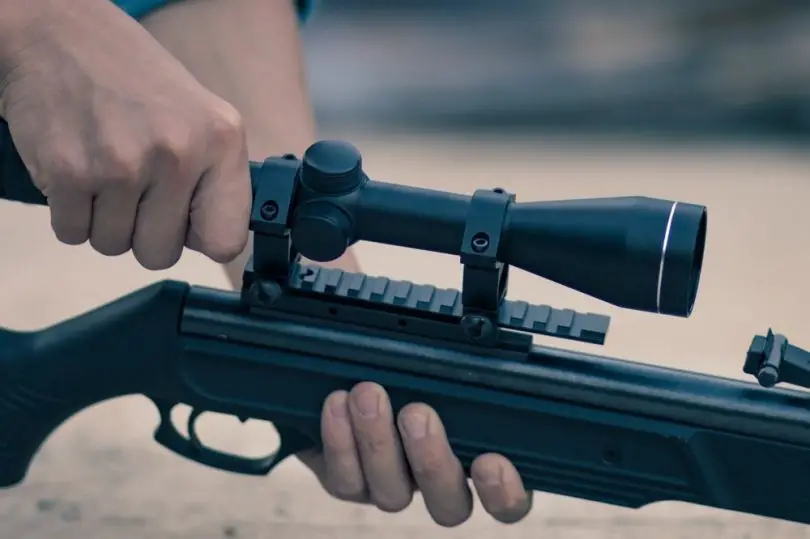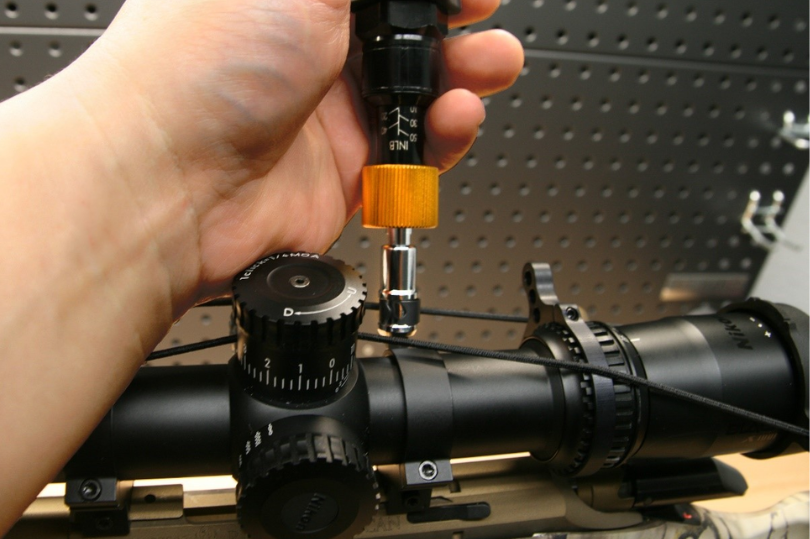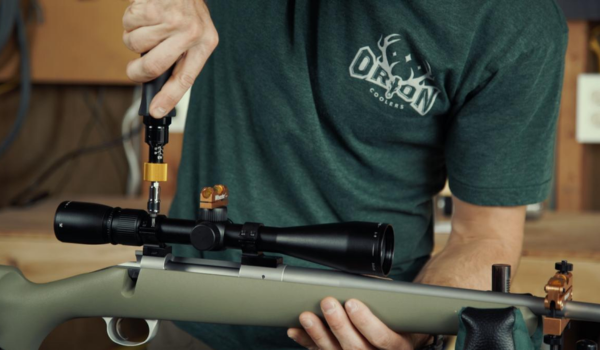When it comes to optimizing the performance of your rifle for hunting, sport shooting, or other purposes, the importance of properly securing your telescopic sight cannot be overstated.
The tension applied to the scope rings has direct consequences on the scope’s alignment, stability, and even the longevity of both the firearm and the scope itself.

Utilizing the correct force when tightening scope rings involves a nuanced understanding of torque, tension, and the physics that hold your gear together.
This article aims to answer a commonly asked question: How tight should your scope rings be?
We’ll examine the elements involved, from the importance of using the right tools to the types of materials involved, providing you with a comprehensive guide to achieve optimal results.
Whether you’re an experienced shooter or new to the scene, this information can be invaluable for getting the most out of your equipment.
How Tight Should Rifle Scope Rings Be
The tightness of rifle scope rings depends on several factors including the material of the scope rings, the specifications of your rifle, and the recommendations from the manufacturer of the scope mount or scope rings.
However, a common guideline used by many gunsmiths is to torque scope ring screws to about 15-20 inch-pounds for steel rings and 12-16 inch-pounds for aluminum rings.

It’s crucial to use a torque wrench to achieve these specific torque levels accurately. Failure to do so can result in either over-tightening, which could deform your scope or scope mount, or under-tightening, which could lead to your scope shifting during recoil.
Some scope mounts come with specifications for the appropriate amount of torque, usually indicated in inch-pounds. If that’s the case, it’s generally best to follow those manufacturer recommendations.
Also, consider using a thread locker like Loctite to ensure that the screws stay in place, especially if you’ll be subjecting the rifle to conditions that involve significant vibration or recoil.
However, this is usually not a substitute for correct torque settings but can serve as an added layer of security.
Importance of Proper Torque in Scope Mounting

The Role of Torque in Rifle Scope Mounting
When it comes to mounting a telescopic sight onto your rifle, the role of torque is not to be underestimated.
Accurate measurement of torque is crucial for achieving the proper force needed to secure the scope mount to the firearm.
Gunsmiths often refer to torque specifications in inch-pounds or foot-pounds. Achieving this accurate level of force will ensure that your setup can withstand the recoil generated by the ammunition.
Torque Wrench and Hex Key
The most commonly used tools for this purpose are a torque wrench and a hex key. A torque wrench is specialized for providing precise force, measured in foot-pounds or inch-pounds.
A hex key, on the other hand, is more straightforward but less precise. An experienced gunsmith would always recommend using a torque wrench for this delicate task, as it ensures that the exact amount of force is applied.
Material Considerations
The material of your scope rings, whether aluminium or steel, will impact the amount of torque required. Aluminium is lighter but tends to be less robust than steel.
Steel is durable but adds weight to your firearm setup. Your material choice will determine the level of force that can be safely applied without causing deformation or damage.
Using Lockers for Added Security
Sometimes, merely tightening the screw is not sufficient, especially when you have to account for variables like vibration and recoil.
In such cases, using a locker like Loctite can offer added security. Lockers are chemical compounds that fill the gaps in screw threads, creating additional friction and thereby reducing the risk of the screws loosening over time.
The Effect of Recoil on Scope Mount Stability
Every time you fire your rifle, the recoil generates a backward force that can affect your scope’s alignment.
This is why the importance of proper torque cannot be overstated. A scope that has been inadequately secured will shift over time due to the energy produced by the ammunition, affecting not just aim but also eye relief. Proper torque ensures that the scope remains stable and can withstand the recoil.
Factors Influencing the Tightness of Scope Rings

Importance of Screw Thread and Bolt
A scope mount usually features a screw thread that holds the scope rings in place. The type of bolt fastener used is another crucial factor in determining how tight your scope rings should be.
It is recommended to consult with a gunsmith for choosing the right kind of screw thread and bolt for your specific rifle and scope combination.
Measuring Weight and Tension
Weight and tension play a role in determining the appropriate tightness of scope rings. A heavier scope will need more force to stay in place.
Understanding the physics of tension will allow you to calculate the adequate amount of force needed to maintain a stable setup.
Friction and Vibration
Over time, factors such as friction and vibration can influence the stability of your scope mount. Too much friction can lead to excessive wear and tear, while vibration can cause the screws to loosen. This is why periodic inspection is crucial, which brings us to the next point.
The Need for Regular Inspection
Frequent inspection of your scope mount is a good practice to ensure that the torque levels are maintained. You should also measure the inch-pounds or foot-pounds using a torque wrench periodically to make sure that the scope rings are as tight as they should be.
Physics of Tension & Force
Tension is a concept in physics that describes the pulling force transmitted axially by the means of a string, cable, or similar one-dimensional continuous object.
When applied to scope rings, the physics of tension explain the forces at work that keep your scope stable, even when subjected to recoil or vibration.
Practical Tips for Optimal Scope Ring Tightness

Using Pound (Mass) as a Measure
When dealing with the force applied to scope rings, some experts recommend understanding the scope and rifle’s weight measured in pounds (mass). The overall weight of the system will affect how much torque is needed to keep the scope rings tight.
Nut (Hardware) and the Importance of Proper Fitting
A nut is often used in conjunction with a bolt fastener to secure the scope rings. Like other elements of this system, the nut should be chosen carefully to match the screw thread and material of the scope rings, whether aluminium or steel.
Auto Mechanics vs Gunsmithing: A Comparison
Much like how an auto mechanic uses specific torque specifications to ensure the safety and performance of a vehicle, a gunsmith employs specialized knowledge to determine the ideal torque settings for a rifle scope.
The two fields, though different, both require a precise understanding of how force and tension interact with materials.
Office Chair and Rifle Scope: An Analogy
As strange as it may sound, tightening the screws on an office chair serves as a good analogy for tightening scope rings.
In both cases, applying the right amount of torque ensures that the pieces are secure, but not overly tight to the point of damaging the materials.
FAQs
What happens when you over-tighten scope rings?
Over-tightening scope rings can have several negative consequences:
- Deformation: The most immediate risk is deforming the scope tube. Over-tightening can apply too much pressure on the scope, causing it to dent or bend. This could affect the internal mechanisms of the scope, leading to reduced accuracy.
- Alignment Issues: Excessive force can cause misalignment of the scope. When your scope isn’t aligned properly, it can significantly impact your shooting accuracy.
- Material Damage: Scope rings are usually made from aluminium or steel. Over-tightening can strain these materials, leading to microscopic cracks or stress that can weaken the ring structure over time.
- Screw and Thread Damage: The screws and threads that are part of the scope ring assembly can also be damaged by over-tightening, making it difficult to adjust or remove the scope in the future.
- Reduced Scope Longevity: Excessive torque can damage the scope’s internal components like the reticle or lens assembly, leading to reduced longevity of the scope.
- Cost: Damage caused by over-tightening usually voids warranties and could necessitate repairs or replacements, leading to additional costs.
Should there be a gap in scope rings?
The presence of a gap in scope rings is generally considered normal and, in many cases, is actually recommended. Most manufacturers design scope rings to have a small gap when properly torqued down. This gap serves a few purposes:
- Uniform Pressure: A gap ensures that the pressure exerted on the scope tube is uniform. Without a gap, one side of the ring might be tighter than the other, causing uneven pressure on the scope which can lead to misalignment or damage.
- Material Flexibility: Both aluminium and steel have some level of elasticity. A gap ensures that there is room for the material to flex without causing damage, especially under conditions like recoil.
- Torque Accuracy: Having a gap can help in achieving accurate torque settings. When there is a gap, you are less likely to over-tighten the scope rings, thereby avoiding the problems associated with over-tightening.
- Ease of Adjustment: A gap makes it easier to adjust the scope in the rings or remove the scope from the rings, as there is some room for maneuverability.
However, the size of the gap can vary based on the manufacturer’s specifications, the material of the rings, and the torque applied.
Always consult with the manufacturer’s guidelines or a professional gunsmith for specifics on how much of a gap is appropriate for your particular setup.
Final Thoughts on Tightness Measurements
Using a torque wrench, understanding the materials involved, and accounting for recoil and weight are all essential steps in securing your scope mount.
Keeping these factors in mind will help you answer the often-asked question: How tight should rifle scope rings be?
By understanding these aspects of scope ring tightness, you’ll not only optimize the performance of your firearm but also prolong the life of your equipment. Whether you’re an experienced shooter or new to the world of firearms, this comprehensive guide should serve as a valuable resource.

